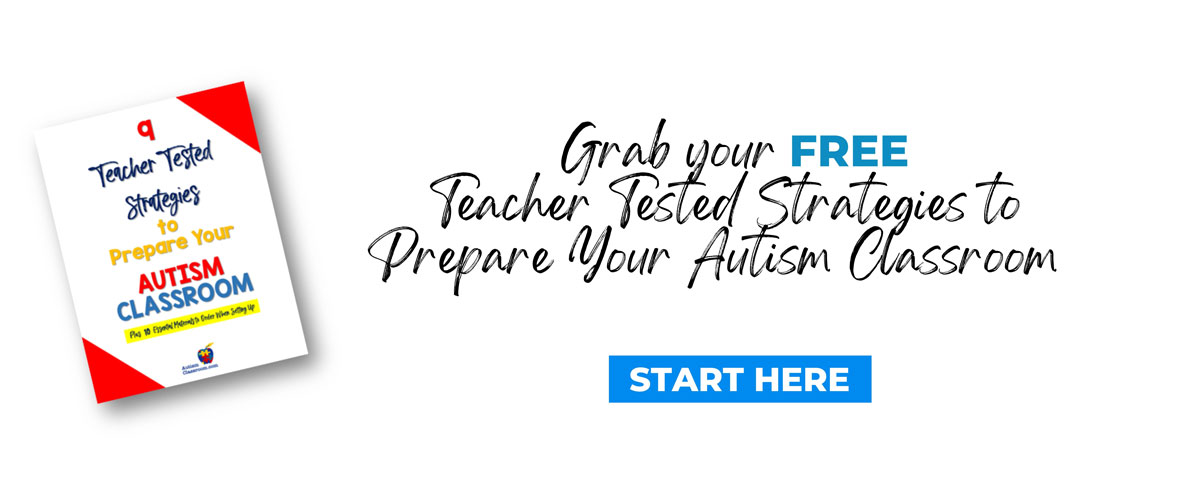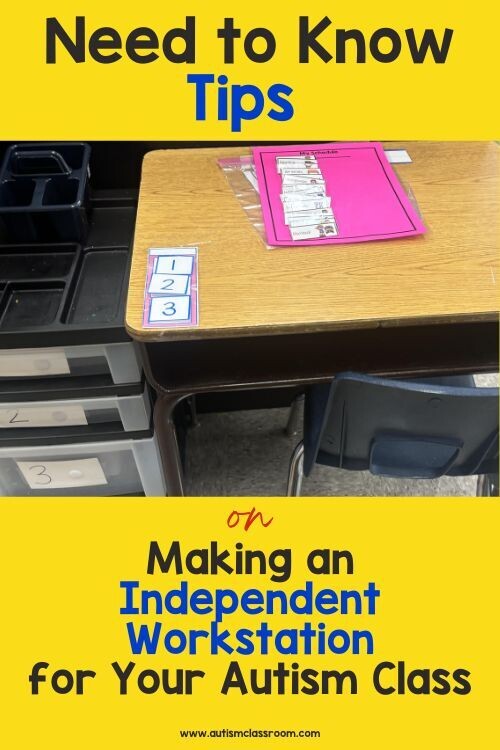
There’s something truly special about watching a student complete a task all on their own and seeing the quiet pride, the confident smile, the glance that says, “I did it.” In autism classrooms, those moments are gold. They represent more than academic success because they reflect independence, confidence, and growth. One of the best ways to create more of those beautiful moments is through well-designed independent work stations.
All kids like to feel proud of their work. You can see the smile a mile away when they did something and they know it. It’s even bigger when they have done something on their own. What are some ways we can help build that independence and build their ability to complete work tasks?
Determine When Independent Work Will Happen
This will be different from group work or centers because the expectation here is that the student begins to learn the skill of completing a task on their own. So, at first this will be a very short window of time until you can help them build this skill. Also, your teaching methods for this short period of time will be extremely different than your teaching methods for the rest of the day.
A Dedicated Work Station
In a self-contained autism classroom, no matter how many students, space matters. Rooms with enough space are rare. In either case, everybody wants a well-designed work station and begs to know where to start. No matter where you start, you want to end with each work station to being systematic, neat, clutter-free and conducive to concentrating.
Here are a few specific options:
- Desks: A classic choice. Position the desk in a corner or against a wall to reduce distractions.
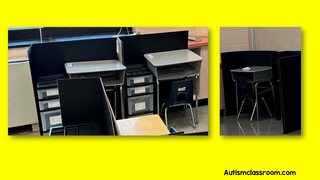
- 3-drawer carts: These are fantastic for organizing tasks. You can add one per drawer and make sure to have the “finished bin” nearby.
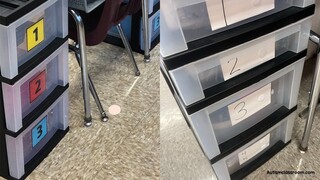
- Science boards: Use them as dividers around a table or desk to block visual distractions.
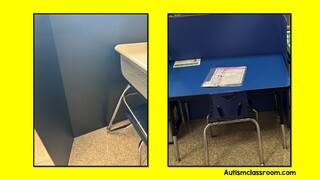
- File cabinets: Place one on either side of a desk or small table to create a small, private work nook.
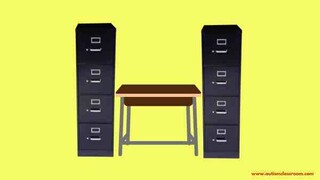
- Blank walls: They make excellent “backdrops” for a work station. The wall serves as a boundary in front of the student. The trick would be to have no clutter or distractions on the wall the students are facing. Or you can use the wall for a boundary on the side of the student as well.
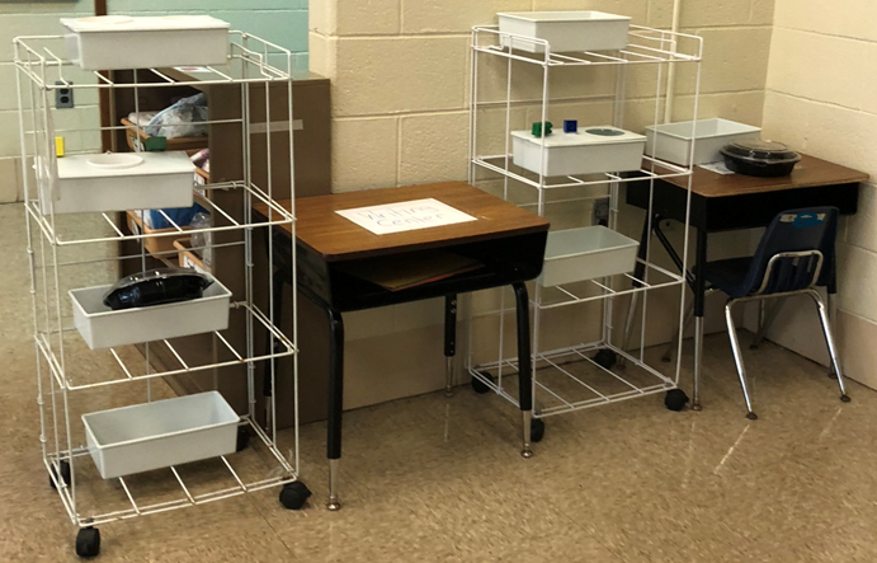
No matter what structure you choose, make sure each station is clearly marked and predictable. Each class has to work with what you have. Some have 6 work stations, some have 4, some have 2, etc. You just have to make enough tasks so you are not running out or resetting in front of the kids.
Essential Components of the Station
A blueprint would be great but every classroom has different needs. However, we can agree that there are some common elements that every station should include:
- A visual work schedule, using words, symbols, pictures, or numbers. Educationally, whatever best fits the student’s needs. This tells them what to do and in what order. (See an example here.)
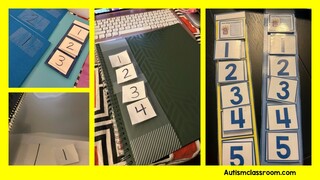
- A finished bin, clearly labeled, where students can place completed work.
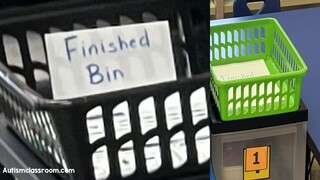
- Tasks that are already mastered or almost mastered. Independent work should be just that, independent. For example, placing stickers on paper, matching strips of color paper, and putting items in a container may be good places to start and then gradually build in more difficult work tasks. If you are saying “They can’t work independently” my answer is NOT YET.
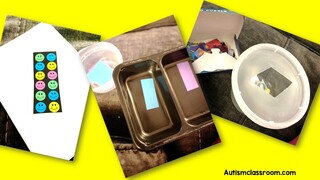
Important: Do not store anything else at the station. No toys, no random supplies, no distractions. This is a space for productive work. You can see additional information on work systems here.
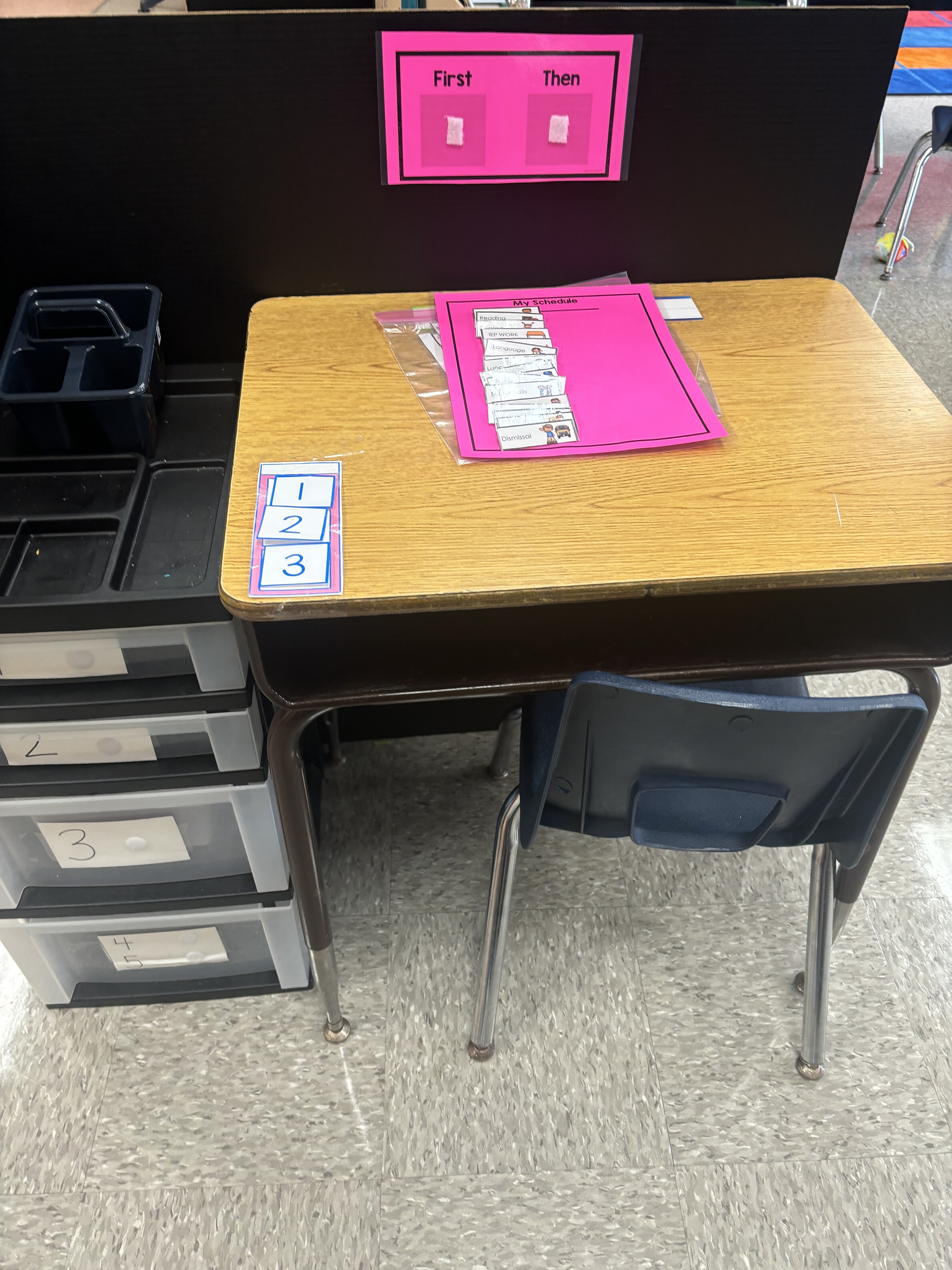
Remember They Won’t Know What to Do at First
Teach it like a new dance move. That’s absolutely right. At the beginning, students often have no idea what this new setup is. Here’s the big truth no one tells you at the IEP meeting: students don’t automatically know what to do at a work station. You have to teach it. Model it. Practice it. Repeat it. Praise it. Then practice again.
Start by showing them how to:
- Check the schedule.
- Complete the task.
- Place it in the finished bin.
- Move to the next task.
You might need to do this with them for several days (or weeks) until they begin to recognize the pattern. Even if you have to use the same tasks so they become proficient, that is ok. But they try not to instruct with words during independent work…you do not want your students to become prompt dependent.
Don’t make yourself part of the routine. Do and say as little as possible during this activity. Provide a physical prompt to help them get things correct, but limit or eliminate verbal prompts during this time when you want them to perform independently.

Set the Rules and Expectations
To make these stations meaningful, clear boundaries are essential:
- No playing at the work station.
- No wandering when they feel “done.” Use a timer or create a transition routine. For example, when the timer goes off, it’s time for the reading corner.
- Do not undo tasks in front of students. If a student sees you un-match their perfectly sorted socks, it can feel discouraging. Instead, wait until after school to reset the materials quietly. Students need to know that their effort is respected.
Restock With Care
At the end of the day, refill the drawers or bins with new or repeated tasks. You don’t need to reinvent the wheel. Just make sure everything is fresh and ready for the next day. Try not to let students see you resetting the station. When you quietly prepare their space, it preserves the feeling that their work matters and isn’t just being “taken apart.”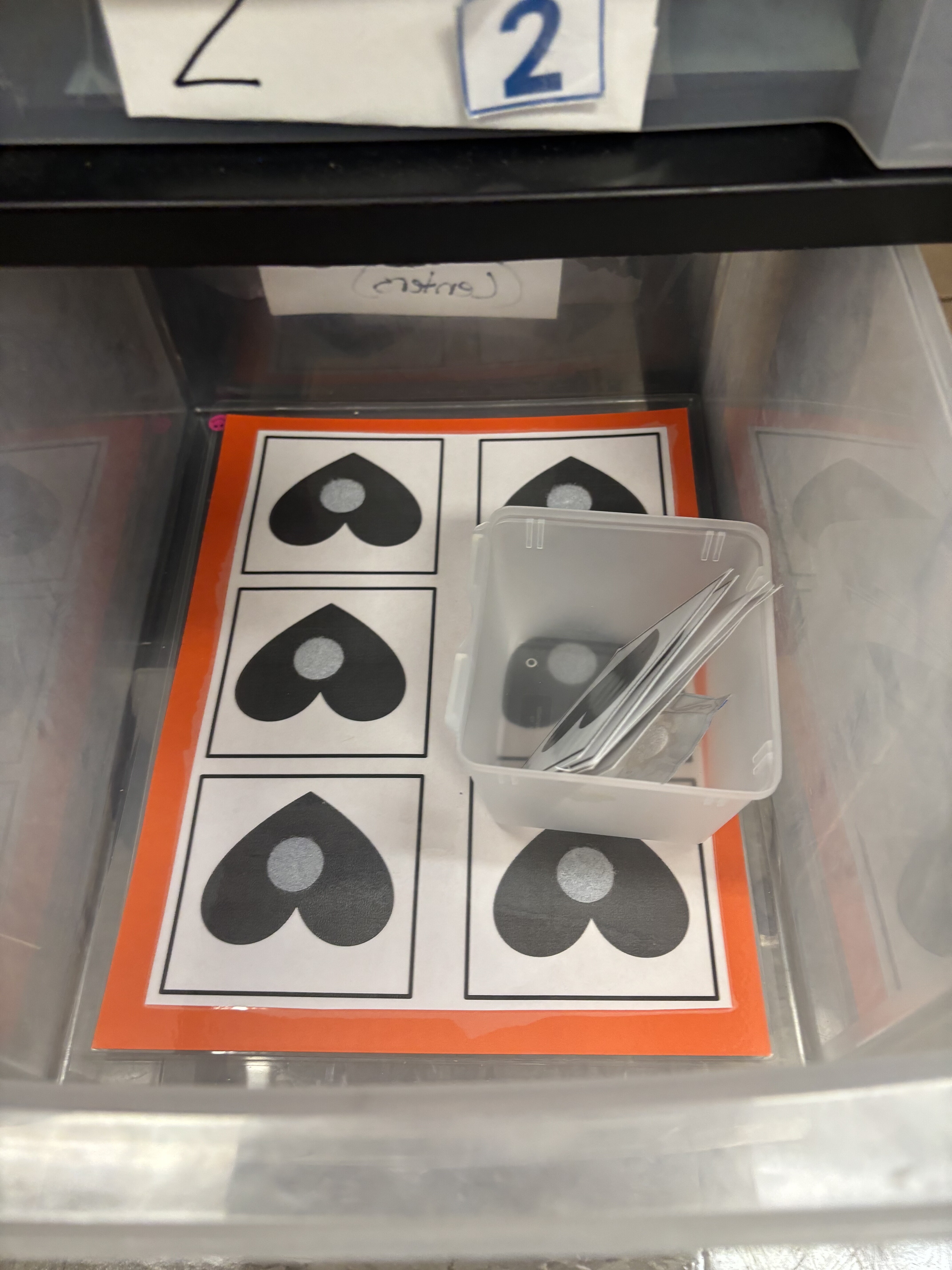
Also, take a moment to think about what worked that day. Did a student struggle with drawer two? Maybe it was too hard. Or, maybe they zipped through everything. If so, it’s time to level it up!
For our students with autism, knowing that they can complete something on their own is empowering. These small routines and structured spaces add up to big changes in confidence, self-direction, and work habits.
Productivity and initiative are life-long skills the help all students. Our students need them to increase their time on task, focus and planning skills.
Because in that moment of them grabbing a task, completing it on their own and placing it in the finished bin, you will be just as proud as they are because you set the stage for them to have this growth. And, you helped them get there. I can’t wait until you see those proud faces.
Join our mailing list for tips.
Click the yellow box below for educator tips. (Parents see the AC at Home Section)

